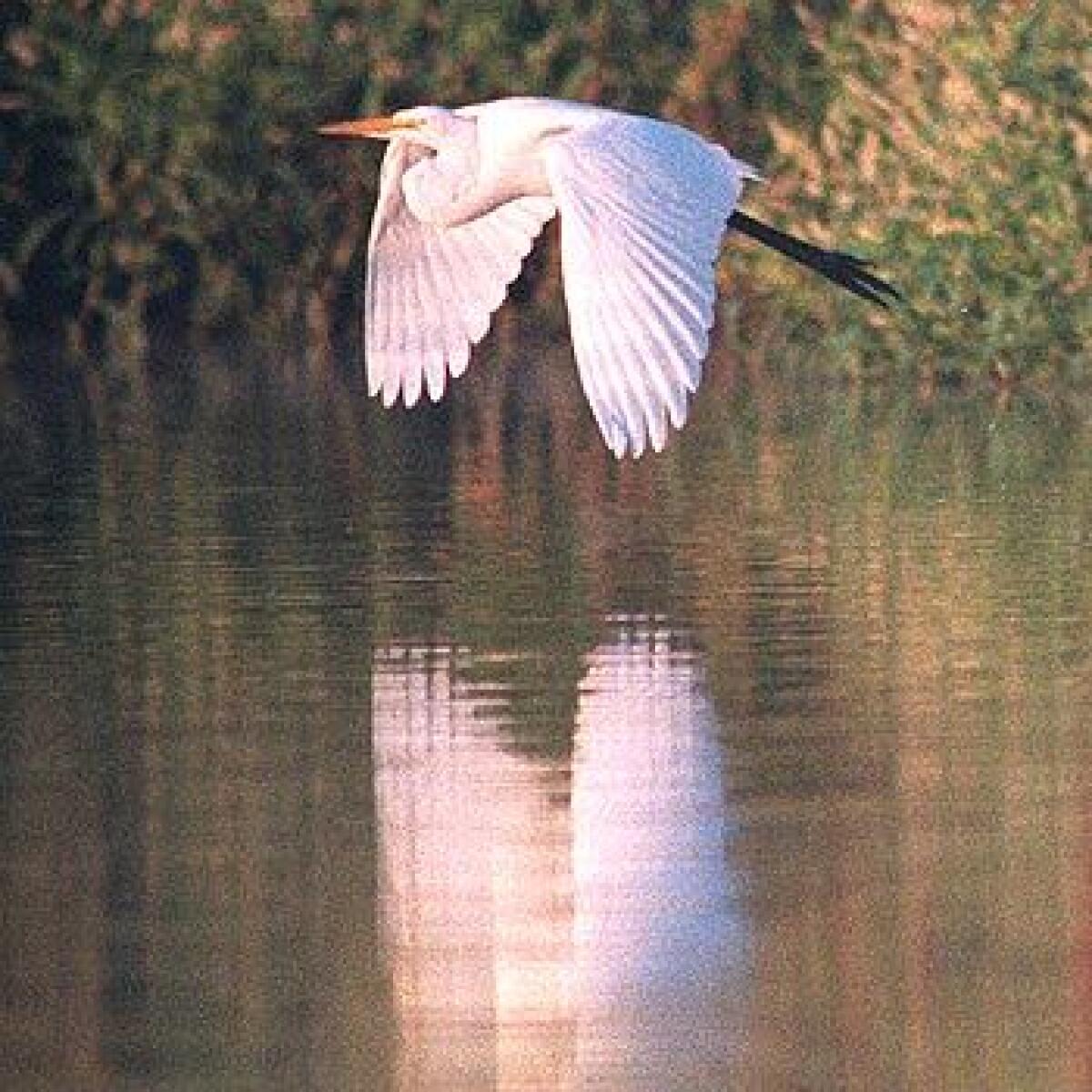Flyby zone

- Share via
I’m standing on a patch of land near the intersection of the 101 and 405 freeways, one of the busiest highway interchanges in the U.S.
But instead of the roar of diesel engines and honking horns, the only detectable noise is the chatter of the belted kingfisher and the rustling of cottonwood leaves. When the mist that shrouds the small pond before me lifts, I can make out the unmistakable silhouettes of great blue herons and snowy egrets. Moments later, an osprey dives for the water and emerges with a fish wriggling in its talons.
It sounds like the surreal dream of an urban bird-watcher, but the Sepulveda Basin Wildlife Reserve is no hallucination. It’s a bona fide bird magnet, attracting some 240 species with a diverse, well-watered habitat. In the spring and fall I can view migrating warblers and other songbirds. Winter is best for waterfowl and shorebirds. I’ve seen a variety of raptors at the basin — red-tailed hawks, Cooper’s hawks, black-shouldered kites, American kestrels, even an occasional falcon. The brilliantly colored orange bishop, an exotic South African species, has also been known to stop by.
Fueled on caffeine from my morning coffee, I head eagerly to the next observation point along the lake. I’ve been coming here to watch birds for six years, and I’m always impressed by the verdant tangle of mulefat and wild currant along the path. The native vegetation here is reborn in the style of the original native floodplain and riparian woodland, after nature lost to the containment of the L.A. River and construction of the Sepulveda Dam in 1939.
Many of the plants I see were reintroduced after a series of development proposals — including a racetrack and a rowing center — were defeated and the space was set aside as a nature reserve.
When I walk down the red dirt path, several white-crowned sparrows sound the alarm and dive into the mulefat. Arriving at the water’s edge, I spy pied-billed grebes, ruddy ducks and a lone cinnamon teal gliding back and forth like ships across the glassy surface of the water. The natural spectacle is broken by an empty can of beans in the weeds, a reminder that 1.5 million people live within a 10-mile radius. One day I found a family with a hibachi grilling chorizo by the wildlife lake. On another outing I encountered a man collecting wild currants for medicinal tea within the refuge. But, despite these violations of the reserve, avian species continue to flourish here.
I cross under Burbank Boulevard and continue along the serpentine path to the Los Angeles River.
Scanning the sky, I count eight turkey vultures, which remind me of the time a group of fifth- and sixth-graders from Children’s Community School spotted half a dozen of the birds soaring above.
The kids recognized the vultures by the conspicuous “V” profile of their wings. They pointed excitedly and raised their binoculars to get a closer view of these magnificent birds. Later, they drew pencil sketches of the vultures, cormorants, white pelicans and American coots they saw in the refuge — proof that the Sepulveda Basin provides a refuge for humans too.
As I reach the concrete channel of the river, I’m amazed by how natural it appears in this section. In fact, if it weren’t for the monolithic dam to the east and the freeway embankment a quarter mile to the south, I might be in rural San Diego County. The vegetation on some of the islands in the river is quite lush — excellent habitat for red-wing blackbirds. Farther upstream, where the streambed is rockier and more preferable to shorebirds, a pair of strutting yellowlegs grabs my attention.
Last but not least, I find a group of black-necked stilts mingling regally below the bridge, in the shadow of Burbank Boulevard, where those on metallic migrations roll on, oblivious to the commute of ages happening in their midst.
Directions: From the 405 Freeway exit Burbank Boulevard. Head west on Burbank. Follow Woodley Avenue north and turn at the second street on the right. Do not go into the Japanese garden entrance. Veer right and head east past the playing fields to the parking lot. The Sepulveda Basin Wildlife Reserve is south of the parking lot. The San Fernando Valley Audubon Society leads monthly bird walks through the Sepulveda Basin. Details at https://www.sanfernandovalleyaudubon.org/sfvas .
More to Read
Sign up for Essential California
The most important California stories and recommendations in your inbox every morning.
You may occasionally receive promotional content from the Los Angeles Times.










